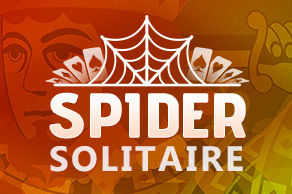The Washington Post: For the ‘children of ISIS,’ target practice starts at age 6. By their teens, they’re ready to be suicide bombers.
For the ‘children of ISIS,’ target practice starts at age 6. By their teens, they’re ready to be suicide bombers.
The interview had gone on for nearly an hour when Taim, a slim, dark-eyed boy, started to fidget. The 8-year-old asked for paper and settled back in an oversize hotel chair to draw a memory.
His picture, in a child’s bold scrawl, was a scene from the small park near his house, a place where he used to play in the days before the bearded men with guns took over the city. A crowd in the park had gathered around two figures, and Taim remembered them vividly: A man with one eye, and a bald man who seemed upset about something.
“He was looking very angry," Taim said, narrating his drawing of the bald man. “He is holding the other man and he is also holding something in his right hand.
“The other man has no eye — they had already taken his eye, you see?" he said, pointing to the second figure. “And then the other men stood behind him, and the head of the man with one eye just fell."
The boy’s slender finger touched the page to show the severed head he had drawn.
“His head just fell," Taim repeated.
The boy closed his eyes, as if to make the image go away.
“No," he said finally. “I don’t want to remember it."
[What it’s like to interview children who have been recruited by ISIS]
During the two years since the founding of the self-declared caliphate in Iraq and Syria, an estimated 6 million people have lived under the rule of the Islamic State. At least a third of them — about 2 million souls — are younger than 15.
These are, in a real sense, children of the caliphate. Collectively, say experts who have studied them, they are a profoundly traumatized population: impressionable young brains exposed not only to the ravages of war but also to countless acts of unspeakable cruelty, from public floggings and amputations to executions — the crucifixions and beheadings that have contributed to the Islamic State’s global notoriety.
The Washington Post interviewed five boys whose families escaped from Islamic State territory, including Taim, a Syrian refugee interviewed near his temporary home in Europe. The location of the refugee facility is being withheld by The Post at the family’s request. The newspaper also reviewed videos, reports and transcripts containing the stories of dozens of other boys and girls whose experiences are broadly similar to those interviewed.
Some, such as Taim, also ended up in the terrorist group’s schools and training camps, where they were force-fed a diet of Islamic State ideology and gory videos. Isolated from their families, they were taught to shoot rifles and throw grenades, and were encouraged to volunteer as suicide bombers, a role extolled by their instructors as the highest calling for any pious Muslim youth. Several described being made to witness — and even participate in — the executions of prisoners.
[Inside a prison in Fallujah where the Islamic State tortured and killed]
Aid workers who interact regularly with such youths describe deep psychological wounds that may be among the Islamic State’s most enduring legacies, setting the stage for new cycles of violence and extremism many years after the caliphate itself is wiped away. But relief organizations are straining to offer even limited counseling to children in the region’s overflowing refugee camps, and officials said even fewer resources are available for those living in shattered Iraqi and Syrian towns that were recently liberated from terrorist rule.
“Everyone has been traumatized," said Chris Seiple, president emeritus of the Institute for Global Engagement, a charity that works with families fleeing the Islamic State. In counseling sessions set up by his organization in northern Iraq, he said, “you can watch how these kids try to begin working through this stuff," sometimes with words but often in drawings that seem to conjure up the same recurring nightmare.
“We see kids drawing pictures of watching ISIS chopping off heads," said Seiple, using a common acronym for the Islamic State. “What do you do with that, besides weep?"
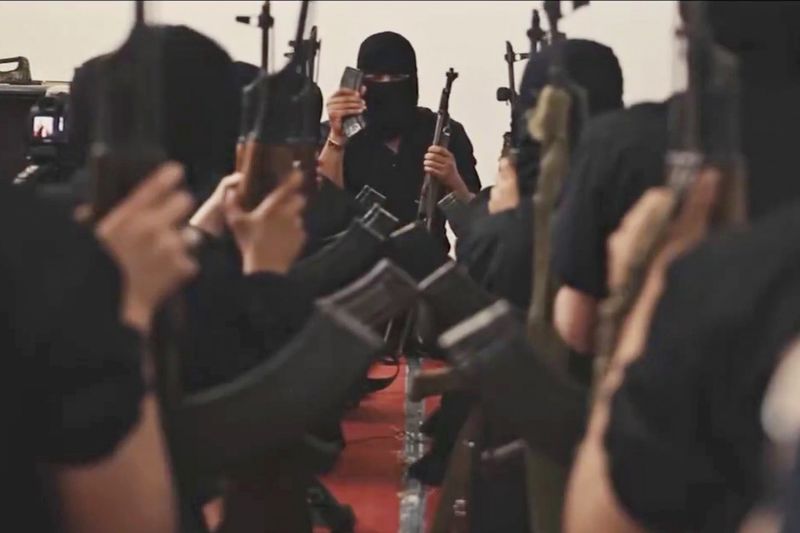
A video of propaganda by the Islamic State is seen online Nov. 18, 2015. It shows children being trained in sports, weapons and Koran recitation in an undisclosed area somewhere between Syria and Iraq. (Balkis Press/Sipa USA via AP)
Taim was 6 when the militants with their black flags rolled into Raqqa, a city in north-central Syria. The streets of the Islamic State’s future capital had already witnessed sporadic battles between rival factions since the start of country’s civil war in late 2011. Now, with the terrorists in charge, the fighting would ease, but the bloodshed would grow steadily worse.
Taim, among the youths interviewed, was exposed to an unusually wide range of experiences during the nearly two years his family lived in the caliphate, from attending a school supervised by Islamic State instructors to undergoing military training in a camp intended to turn young boys into warriors and suicide bombers. In other respects, his story is strikingly similar to that of the four other boys, all of whom described harsh conditions and the brutal treatment of ordinary citizens, including family members. The Post agreed not to identify the boys, or photograph them, to protect their privacy and prevent possible retaliation by Islamic State supporters. Taim’s family name was withheld at his parents’ request.
Bright and alert with a shy smile, Taim turns wistful when asked about his memories of the early weeks after the jihadists took control. Before the Islamic State, daily life revolved around family, play time and his local school, which he adored. “I loved school," he said with a grin, listing math, art and sports as favorite subjects.
Initially, the town’s new occupiers closed his school, turning the building into a military base, Taim’s family members said. When students were finally allowed to return months later, the fighters were still there, a physical presence in the classroom. They gave out trinkets and prizes and personally oversaw the introduction of a new curriculum, developed and approved by the Islamic State.
“They would give us toys at the beginning," he said, “but when the lessons began, they were very serious. They would mainly teach us about Islam."
[ISIS, losing fighters and territory, increasingly turns to child bombers]
Taim remembered how his new teachers gave special emphasis to a particular story from the life of the prophet Muhammad. In it, Islam’s founder punishes a group of camel thieves by plucking out their eyes and chopping off their limbs. For Raqqa youths, the lesson about harsh justice appeared to serve as both a warning and a justification for the cruel punishments the militants were beginning to inflict on the city’s residents for violations ranging from suspecting spying to smoking cigarettes.
Over time, the Islamic State replaced traditional classroom textbooks with new ones, written and published by the terrorists themselves. Many of the books have been collected and studied over the past two years by Western analysts, who describe the group’s educational literature as thinly disguised propaganda.
For very young children, lessons on arithmetic and handwriting are illustrated with pictures of guns, grenades and tanks. For older pupils, books on science and history glorify martyrdom and portray the creation of the Islamic State as humanity’s crowning achievement.
Jacob Olidort, an expert on Islamic militant literature who has analyzed dozens of such texts, said the literature is a serious and systematic attempt at shaping young minds, with the aim of producing not just believers but fighters.
“What we learn is that education is not only part of their arsenal, but an entire theater of conflict," said Olidort, a scholar at the Washington Institute for Near East Policy. “They’re trying to create a jihadi generation. It’s not just believing the right creed, but being able to fight. It’s about convincing young people that only their perspective on the world is right and everyone else’s is wrong."
For Taim, some of the most memorable lessons were not contained in books. Often, he recalled, the Islamic State’s teachers admonished the children to act as informants, promptly reporting any behavior by their parents that violated religious laws or suggested opposition to the group’s rule.
One day, he said, the teachers marched the class into a nearby park and made the children stand around an open pit — a future grave, one of the instructors said, for any child who failed to speak up if his parents were resisting or hiding from the Islamic State.
“If we did not tell them," he said, “they would throw us into the hole."

A photo posted on social media accounts by Islamic State supporters of a youth with a weapon. (Obtained by The Washington Post)
Even under the rule of terrorists, Taim’s parents sought to preserve a few fragments of a normal life for the young family. His mother donned the heavy abaya robe and double veil whenever she ventured outside to shop, and the family’s daily rhythm adjusted to accommodate the Islamic State’s strictures on participation in daily prayers.
But privately, the parents worried that life under the regime was profoundly affecting their oldest son. A walk to the nearby al-Rasheed Park — a favorite playground before the civil war — entailed a risk of encountering decapitated corpses, part of a grisly display that followed the near-daily executions in Raqqa’s main square. The boy personally witnessed several beheadings, and years later he could describe vividly how the bearded executioner would hold the victim’s head with one hand while using the other to slice and hack.
“There was a lot of blood. A loooootttt of blood," Taim said, drawing out the word.
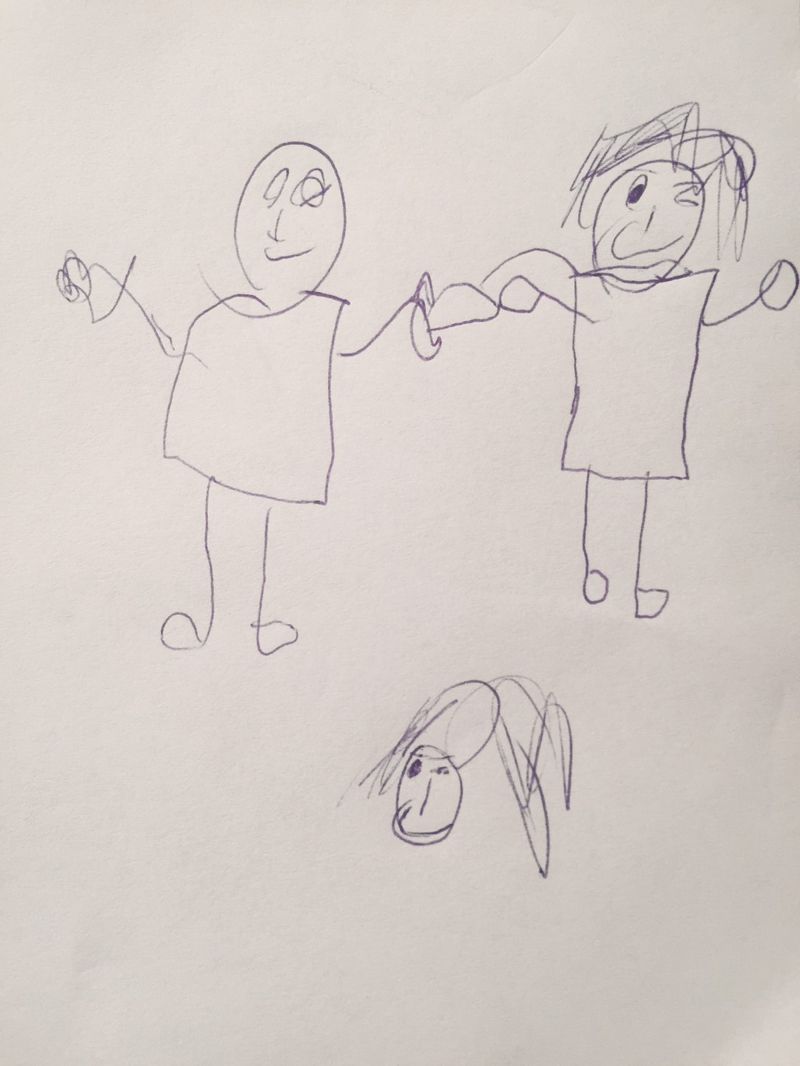 A drawing by 8-year-old Taim, who attended a school run by militants in Raqqa, Syria. “This was in the al-Rasheed Park where I went to play. I saw people standing around two men," Taim said about the picture. “See," he said, pointing at the man with no hair. "See he was looking very angry. He is holding the other man and he is also holding something in his right hand. The other man has no eye — they had already taken his eye, you see? And then the other men stood behind him, and the head of the man with one eye just fell. His head just fell."
A drawing by 8-year-old Taim, who attended a school run by militants in Raqqa, Syria. “This was in the al-Rasheed Park where I went to play. I saw people standing around two men," Taim said about the picture. “See," he said, pointing at the man with no hair. "See he was looking very angry. He is holding the other man and he is also holding something in his right hand. The other man has no eye — they had already taken his eye, you see? And then the other men stood behind him, and the head of the man with one eye just fell. His head just fell." But a bigger jolt came on the day that Taim burst into the house and began packing his belongings, announcing that he had been selected for a special training camp for boys. The parents had heard about the place, a kind of boot camp for preteens where children received intensive instruction in weaponry, combat skills and Islamic State ideology.
Taim insisted that “it was his will" to leave home to enroll in the camp, and he accused his parents of neglecting his religious education, his mother said. She knew the futility of opposing the Islamic State’s wish for her son, yet she tried to talk him out of going. Stay, she told her son, and the family would go to mosque more frequently.
“I said, ‘Come home and pray! You can pray at home!’ " she recalled. “He said, ‘May Allah deprive you, as you deprived me.’ "
[Inside an ISIS training camp for boys]
The camp in which Taim eventually enrolled was one of dozens established throughout the caliphate to train boys as young as 6. Some are named after the organization’s leaders and heroes, including Abu Musab al-Zarqawi, the Jordanian who founded the Iraqi terrorist group that would later call itself the Islamic State.
All are prominently featured in the jihadists’ online propaganda, which includes video footage of young boys in camouflage uniforms firing weapons, assisting in executions and training for suicide missions.
“The Islamic State seduces young boys into their training camps and puts so many resources into training them for absolute loyalty and obedience," said Anne Speckhard, an expert in violent extremism and an adjunct associate professor of psychiatry at Georgetown University Medical Center. For the Islamic State, she said, the camps are most effective as a production line for suicide bombers, “because children are the easiest of any of their cadres to totally manipulate."
Speckhard interviewed graduates of such camps as part of a project for the Washington-based International Center for the Study of Violent Extremism, which collected the stories of Islamic State veterans in video archives and in a published volume called “ISIS Defectors: Inside Stories of the Terrorist Caliphate." In one of the videotaped interviews, a 15-year-old Syrian describes how boys at his camp would compete for a chance to become a “button" — a suicide bomber.
“They teach him about the car, how it’s rigged up, and you go near it to see that you push the button and it will explode," said Ibn Omar, who was 13 when he joined an Islamic State youth camp in Syria. “They tell them to blow themselves up among the unbelievers — the infidels. The guy who taught us religion taught this. He taught us, ‘When you get to that car and push the button you will go to Paradise.’ "
Taim, just 6 at the time of his induction as a “cub of the caliphate," was too young, even for such a simple-minded mission. For him, camp was a mix of fun activities — sports, contests and target practice — with a heavy dollop of religious indoctrination. Many of his school friends trained alongside him, together with foreigners: teens and boys from faraway places such as Egypt, Pakistan and Uzbekistan.
“They said only special boys would get there: the best ones. And they would strengthen our belief," he said. “They wanted to teach us more about religious rules, sports and how to become a mujahid," or holy warrior.
Between lessons, he said, the instructors showed videos, hour after hour of violent images, all of them starring Daesh — a common Arabic acronym for the Islamic State — and all striking precisely the same theme.
“They would show how Daesh was fighting and beheading all those who were against the caliphate," Taim said.
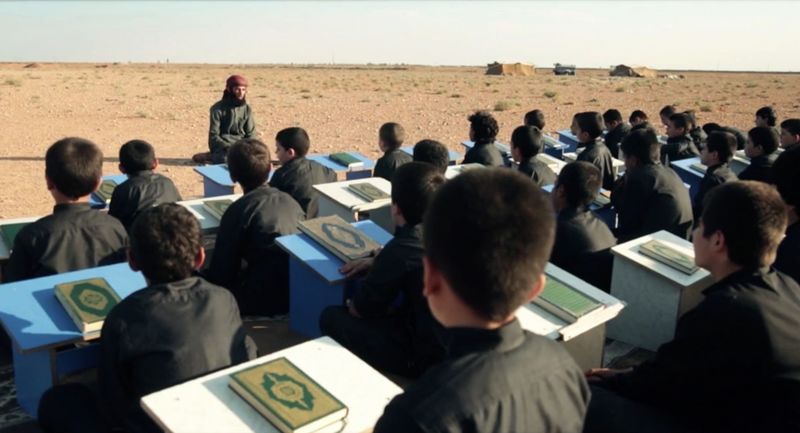
An Islamic State propaganda video shows a teacher and young students. “These small bodies are filled with the oneness of God," the teacher said, “so when they explode they will kill and devastate." (Obtained by The Washington Post)
Back in Raqqa, the pressure to flee the caliphate grew stronger. The city’s new leaders began harassing Taim’s father, suspicious that he might have once fought for a rival militia group. The parents began to worry that Taim would be taken from them permanently.
The family gathered what money they had. One day, when Taim was home, they slipped out of Raqqa, paying bribes at checkpoints and border crossings and then joining the torrent of refugees heading from Turkey to Northern Europe. Eventually, they landed in a refugee camp, where they would begin to seek a new life for Taim far outside the reach of the Islamic State.
In the caliphate, the boundaries of the self-declared Islamic State are contracting against the steady advance of a U.S.-led military coalition, which has overrun key cities and killed many of the group’s most prominent leaders. Yet, the youth camps still remain — a testament to their enormous value at a time when the terrorist group is fighting for its survival. An Islamic State operative, who agreed to be interviewed by The Post over the Internet, described the camps and their young graduates as vital to the organization’s future.
[ISIS’s ambitions grow, even as its territory shrinks]
“They are our fighters and leaders of tomorrow, and they will be strong and not fearing to die," said the operative, who would speak only on the condition of anonymity. “In the future you will not only fear our men. You must fear our children, too."
The Syrian boy who escaped the caliphate’s fearsome embrace appears for now to be adjusting. Taim beams when he talks about his new school, and his quick grasp of the local language betrays both an intelligence and a yearning for acceptance in his family’s adopted homeland. He is a charmer, playfully asking a visiting journalist about her age after she asks about his.
“Don’t worry, I know women like to make themselves younger than they seem," he said. Giggling, he elaborated on the source of his knowledge: “This one guy from Daesh said I should learn this lesson about women so I won’t get in trouble with my future wife."
Yet, even in peaceful, prosperous Northern Europe, the Islamic State at times seems terrifyingly close. Taim’s mother described occasional fits of hysteria in which the boy screams uncontrollably. He chatters at length about his experiences in the training camp, only to abruptly shut down. “I don’t like to remember what happened there," he said.
Taim’s mother said that she is seeking counseling for her son while trying to keep his mind occupied on school and sports. But there are times, she said, when Taim is overcome with dread, convinced that the Islamic State will never relinquish its hold on him.
During such spells, the mother said, the 8-year-old becomes quietly forlorn, as though resigning himself to a dreary fate that he cannot escape.
“I belong to the Daesh people now," he said.
Read more:
Obama administration sends more U.S. troops to fight ISIS
Play right from this page
Checkpoint newsletter
Military, defense and security at home and abroad.

Posted on October 12th, 2016
The great Korean bat flip mystery
The great Korean bat flip mystery
by Mickey Duzyj, espn.comOctober 4, 2016
The videos started to appear in America a few years ago, crossing the Pacific and landing on our digital doorsteps like mysterious gifts. Their contents were joyously unfamiliar: Korea Baseball Organization sluggers walloping balls and then flipping their bats with abandon, sending them spiraling through the air. Montages surfaced on a website called mykbo.net, gifs hit social media, and ecstatic headlines soon followed:
Korean Baseball Player Flips Bat Like a Champion
Now This Is a Righteous Bat Flip
This KBO Bat Flip Will Rock Your World, Free Your Soul
When I first saw the clips, I was astonished. What was this place, this parallel sports universe where baseball players could shatter the game's unwritten rules? While American ballplayers from Mickey Mantle to David Ortiz have flipped their bats, the act is still perceived as a great offense here -- an insult to the pitcher, the opposing team and all that's sacred in America's pastime. This tension came to a head last October, when Blue Jays outfielder Jose Bautista triumphantly flipped his bat after a magnificent home run during the American League Division Series, a viral gesture that was codified into memes, baseball cards and, most recently, a corn maze in Canada. Many fans were thrilled. But some current and former players, such as Cole Hamels, Mike Schmidt and Goose Gossage, were not. "Bautista is a f---ing disgrace to the game," Gossage said.
As Major League Baseball struggles to overcome its staid image and lure younger fans -- according to Nielsen, most of the sport's TV viewers are over 50 -- the simple bat flip has come to symbolize the culture war being waged within its ranks. It's a conflict between those who believe the game should embrace the traditions of other countries and flashier elements of other sports, and those who, as Bautista wrote in The Players' Tribune, are "old-school, my-way-or-the-highway type of people who never want the game to evolve."
Meanwhile, in the Korea Baseball Organization, bat flips aren't just permitted -- they're embraced. "A bat flip isn't disrespectful here in Korea, which is a very formal, respectful country," says Dan Kurtz, a Korean-American who started mykbo.net in 2002 as a message board for English-speaking fans. "A guy flips and the pitchers don't do anything about it. It's just part of the game." Kurtz explains that bat flips, which are called ppa dun in Korea -- a term that combines the words for "bat" and "throw" -- are ubiquitous in the KBO. But he isn't sure how that happened. "People ask me, 'Why can't we do this in Major League Baseball?'" he says. "I want to know: Where in Korea did it originate and why?"
Original Page: http://www.espn.com/espn/feature/story/_/id/17668845/korean-bat-flip

Posted on October 11th, 2016
Stop Waiting for The Perfect Time. There isn’t One!
Stop Waiting for The Perfect Time. There isn’t One!
by Thomas Oppong, medium.comSeptember 25, 2016 07:01 AM
“Do not wait: the time will never be ‘just right’. Start where you stand, and work with whatever tools you may have at your command and better tools will be found as you go along.”― Napoleon Hill
There is never a perfect time for you to take action. There is never a perfect time for you to launch that project, to spend time with your family, to write a book, change your habit, or embrace a new habit. Once you acknowledge this, you will get a lot more meaningful work done everyday.
Kill the excuses!
“The only thing standing between you and your goal is the bullshit story you keep telling yourself as to why you can’t achieve it.” ― Jordan Belfort
I’m too tired. I don’t have the time. I am not capable. Someone else will do it. It’s too late now. Now is not the right time. I am not talented. I am not ready. I’m too scared. Nobody will help me. What if I fail. I don’t feel motivated. I’d rather do nothing. I don’t have the money..yet!
It’s easy to come up with excuses and justify not getting started. The longer you fill your head with rationalizations and empty excuses, the less time you have to take action.
It’s easy to say, “I will start when I have more experience, money, time and resources”. By this time next year, you will have a lot more excuses. It’s a cycle. And once you get caught in the loop, it, can be difficult to break free and do something meaniinful you care about.
Many people are living their entire lives without ever standing up and stepping out. But it’s exciting to witness the rare few who dare themselves and step out of their personal bubbles to make a change.
Most of use live with the stubborn illusion that we will always have tomorrow to do today’s work. We consistently hold on to this belief and keep procrastinating until work becomes a heavy burden.
Left unchecked, we always default toward a more comfortable path. Your comfortable zone provides a state of mental security. You can understand why it’s so hard to kick your brain out of your comfort zone.
It pays to be an outlier!
“Outliers are those who have been given opportunities — and who have had the strength and presence of mind to seize them.” — Malcom Gladwell
Outliers are those who seize opportunities and run with them. People who realize how little time they have and are driven to make the absolute most of it. Those are the ones who really live.
Studies consistently show that when we look back on our lives the most common regrets are not the risks we took, but the ones we didn’t. Of the many regrets people describe, regrets of inaction outnumber those of action by nearly two to one.
Some of the most common include not being more assertive, and failing to seize the moment. When people reflect later in life, it is the things they did not do that generate the greatest despair. You can seize the moment today!
Getting past the biggest hurdle!
The biggest hurdle for many of us is simply getting started. Making that important decision to take a step. You can be as big and successful as you can possibly imagine if you build that mindset you need to step outside the safe zone. You just don’t trust yourself enough yet.
You have everything you need to make an impact in the world if you can get past the excuses. You don’t even have to start a new project. What you need is something you can emotionally and deeply connect with.
Don’t think too far into the future. Use what you have right now at where you are and witness the magic of creative work. If you’re thinking about it too much, chances are you’re killing it.
Get started now!
“It is better to live your own destiny imperfectly than to live an imitation of somebody else’s life with perfection.” ― Anonymous, The Bhagavad Gita
No matter who you are or what you dream of becoming, remember this: No one ever came to this planet to take a back seat, play second fiddle or make it small.
Stop questioning yourself. Stop listening to everyone else. The world is waiting for you to start something. Waiting to hear what you have to say. Waiting to use your creative product or service. Waiting to share your ideas and original work.
Remember the dream you were too scared to chase? It’s still not too late to give it a try. We tend to think that we’re not good enough, and give up before we even start. The fear of taking risks never goes away but it does become familiar.
The self-criticism and self-doubt will always be present, and the only solution is to just act in spite of them. Your first ebook, article, song, podcast, freelancer work or creative work never will not be satisfying and perfect, and it’s okay.
When we express ourselves in a way that brings out the best in us, we’ve already succeeded. Step by step we improve despite the temporary failures. That’s what matters. It matters that you persist.
“Don’t wait until everything is just right. It will never be perfect.
There will always be challenges, obstacles and less than perfect conditions.
So what. Get started now. With each step you take, you will grow stronger and stronger, more and more skilled, more and more self-confident and more and more successful.” — Mark Victor Hansen
Take advantage of the enormous opportunities the information age presents. You have everything you need to go make something meaningful. Something you deeply care about. You don’t have to be right when you start. But it matters that you begin now.
There isn’t a right time for anything. There’s no such thing as perfect timing. If it feels right, just go for it today. Don’t wait until everything is just perfect or right. Get started now.
If you enjoyed this post, you will love Postanly Weekly. It’s a FREE weekly digest of my best Medium posts and the most insightful life and career improvement posts across the web.
Here is the archive of Postanly Weekly!
Original Page: https://medium.com/the-mission/stop-waiting-for-the-perfect-time-there-isnt-one-249e2f9e34fb

Posted on October 11th, 2016
Zia race 3 the biggest myth you can not make money betting favorit))k [
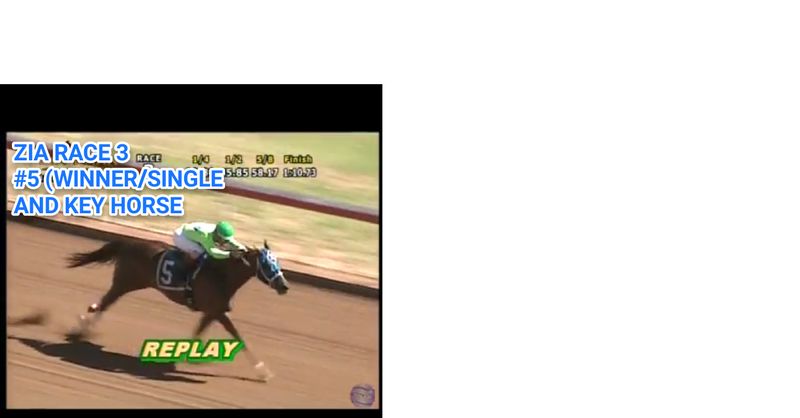 http://go.picsart.com/f1Fc/It5YOiQqox8
http://go.picsart.com/f1Fc/It5YOiQqox8
Posted on October 11th, 2016
How Sites Like Google and Facebook Put You In Political Echo Chambers
How Sites Like Google and Facebook Put You In Political Echo Chambers
by Eric Ravenscraft, lifehacker.comNews feeds like Facebook’s shape how you see the world. Algorithms behind those sites determine what news is important enough for you to see. Their goal is to improve the relevance of the stories you read, but they have a nasty side effect: They control the flow of information, and you wind up in an echo chamber where you only hear ideas you agree with.
On the surface, the idea of suggesting stories that are relevant to you makes sense. Google Now suggests articles they think you’ll like based on your search history. You can even prevent this feature from showing you stories about topics or from news sources you don’t like. After all, why would you want Google recommend garbage from sites you hate? However, the more you hear the same perspectives from the same sources, the more it reinforces your ideas without ever challenging them. It’s understandable if you don’t want to see articles about underwater basket weaving if you’re not into it, but when it comes to important topics, only getting news from one outlet colors your perceptions and even leads to a tribal mentality where we vilify anyone outside the group.
Algorithmic Feeds Encourage Bias, Even If They Don’t Mean To
Facebook is the biggest publisher in the world. It’s the primary way most people hear and read the news. That also gives the social network a lot of influence over your perceptions. Earlier this year, we showed you how to find out how Facebook thinks you lean politically. As an interactive tool from the Wall Street Journal revealed, the version of a story you hear depends heavily on how you lean. If you read liberal news sources (or even just have predominantly liberal friends), Facebook will show you more liberal-leaning news. The same thing happens for conservatives and even the most fringe members of the political spectrum. In short, this algorithmically-enforced confirmation bias means the more you read information you agree with, the more Facebook will show you even more information you agree with.
Of course, the system works that way because we don’t like the idea of big companies deciding what we see for us. Earlier this year, Gizmodo revealed Facebook routinely suppressed conservative news in its trending news module (which is separate from its News Feed). This led to the U.S. Senate launching an investigation into the social media giant’s possible bias, after which Facebook removed all human curators from its news module. It even stopped summarizing news stories. Now, trending news topics are designated simply by the subject of their story. If, for example, you want to know why John Oliver is in the news, you’ll have to click through to find out from a news source. You can’t get it from Facebook itself.
Facebook isn’t alone. Google does this too. If you scroll down in Google Now on your smartphone, you’ll see recommendations for articles to read. These are chosen based on the topics you search for, which articles you choose to read, and which news sources you frequent. In other words, Google also wants to give you more of what you’re already looking for.
While it’s handy, it’s certainly privy to bias—especially your own. Even worse, Google doesn’t care about the quality of the articles it shows you as long as they’re on topic. For example, Google knows I’m looking forward to the new season of Rick and Morty, so it routinely suggests any article that might have information about the potential release date for season three. Most of these articles are rehashes of completely crap rumors and hoaxes that have been debunked months ago, but that doesn’t matter. It says “Rick and Morty,” so I get the recommendations. This also happens when I read political news. If I click on one story about a particular politician, Google will recommend the most popular stories about that person, regardless of whether or not those stories are well-researched or even coherent. As long as I’ve “shown interest” Google thinks I should read about it.
Unfortunately, just showing you the articles that an algorithm thinks you want to see is a bit like only feeding you food that you find the tastiest. If a computer decided that you responded most positively to ice cream, you might never eat anything else again, but it won’t make you healthy. Likewise, Facebook and Google have a vested interest in showing you the stories you interact with the most. At best, those companies can try to avoid passing along obviously fake news, but it’s impossible to avoid encouraging your own subtle biases when the system rewards you with more things you like.
What You Can Do to Fight the Bias and Inform Yourself
Tailoring your news feeds to your interests isn’t necessarily bad. There’s no reason to read garbage sites that indulge in conspiracy theories, shamelessly lie, or sling low-brow insults for a cheap laugh (unless you’re into that sort of thing.) However, you can still do a few things to avoid creating your own echo chamber:
- Use news apps that don’t pick content for you. Algorithmic timelines are fine if you want to just get the gist of what’s going on today without diving too deep. If you want a wider viewpoint, subscribe to sites via a service like Feedly or use Twitter’s chronological timeline. You can even keep using Facebook by sorting by Most Recent. Google News also collects related stories around a single topic in one place so you can see every viewpoint, rather than just being shown the one that lines up most with your views.
- Follow different news outlets with a variety of perspectives. The best way to get a wider understanding of your world is to read stories from many different viewpoints. Even if a news outlet tries its hardest not to be biased, others might catch something they miss or offer a perspective no one else thought of. When you fill up your feeds with the sources you want to read from, try to expand your list to include places that challenge you or propose ideas that you’re not familiar with. Challenging your own ideas is a powerful way to refine them.
- Pause before you jump on a story to consider your own biases. When you encounter a story about something crazy happening, pause for a moment and ask yourself “Is this true?” Don’t share it just because it sounds true. Take a few minutes to do a little research and verify a story before you believe it. Discerning the truth on the internet is a lifelong skill and no one can ever expect to get it right all the time, but taking a few minutes to pause before you share or engage something can go a long way towards curbing misinformation online.
When a tech company decides to use algorithms to adjust the world to suit your viewpoints, it distorts your reality. That doesn’t mean all algorithms are bad, but we do need to be honest with ourselves about how our perception of world events are colored by the news we see and read . If you want to avoid being a victim of the almighty algorithm, take your research into your own hands. Or, at the very least, accept that you’re only getting the part of the story that Google or Facebook thinks you’ll like the most.
Illustration by Angelica Alzona.
Want more tips and tricks for living life better? Follow Lifehacker on Twitter, Facebook, or Google+.Original Page: http://lifehacker.com/how-sites-like-google-and-facebook-put-you-in-political-1787659102

Posted on October 11th, 2016
Applying Lessons from Sun Tzu and The Art of War to Everyday Life
Applying Lessons from Sun Tzu and The Art of War to Everyday Life
by James Clear, lifehacker.comSun Tzu was a legendary military strategist in ancient China and he is the author of the famous book, The Art of War. He was a master of “soft power” and the father of “agile warfare.” Whenever possible, he preferred to win without fighting or, at the very least, to win the easiest battles first.
This post originally appeared on JamesClear.com.
He wrote, “In war, the victorious strategist only seeks battle after the victory has been won.” He advised his troops to “make your way by unexpected routes and attack unguarded spots.” And he further stated, “Military tactics are like water. For water, in its natural course, runs away from high places and hastens downwards. So, in war, the way is to avoid what is strong and strike at what is weak.”
The teachings of Sun Tzu extend far beyond the field of battle because they are focused on finding the easiest way to achieve a specific goal. His approaches can be applied to everything from business growth and goal setting to weight loss and habit formation.
Let’s talk about how to apply military strategy to our daily lives.
The Battle for Better Habits
Too often, we try to build new habits, achieve big goals, and otherwise “win at life” through sheer force. We fight our battles directly and attack the enemy—in this case, our bad habits—at the point where they are strongest.
For example:
- We try to follow a strict diet while we are out to dinner with friends.
- We try to write a book in a noisy environment.
- We try to eat healthy in a house filled with sweets and sugar.
- We try to do our homework with the television on.
- We try to concentrate while using a smartphone filled with social media apps, games, and other distractions.
And when we fall off course and fail to achieve our goals, we blame ourselves for “not wanting it badly enough” and for not having enough willpower. In many cases, however, failure is not a result of poor willpower, but a result of poor strategy.
Good military leaders start by winning easy battles and improving their position. They wait until the opposition is weakened and morale is low before they take on their foe directly. Why start a war by fighting battles in areas that are well-defended? Why start new habits in an environment that makes progress difficult?
Sun Tzu would never lead his army into a battle where the terrain was not to his advantage. He would not begin by attacking the point where the enemy is strongest. Similarly, we should make easy improvements to our habits first, build our strength, and establish a better position from which to attack the most difficult changes.
Sun Tzu, Master of Habits
Let’s adapt Sun Tzu’s teachings to building better habits. Here are a few examples that take his thoughts on war and apply them to daily life.
Example 1:
- Sun Tzu: “You can be sure in succeeding in your attacks if you only attack places which are undefended.”
- Adapted: “You can be sure in succeeding in your habits if you only build habits which are easy to maintain.”
Example 2:
- Sun Tzu: “He will win who knows when to fight and when not to fight.”
- Adapted: “He will improve his behavior who knows which habits to start with and which ones to leave for later.”
Example 3:
- Sun Tzu: “A clever general, therefore, avoids an army when its spirit is keen, but attacks it when it is sluggish and inclined to return.”
- Adapted: “A clever person, therefore, avoids the areas where bad habits are strongest, but attacks them where they are weak and easy to change.”
Fight Battles You Are Destined to Win
Becoming better is not simply a matter of willpower or work ethic. It’s also a matter of strategy. What people assume is a lack of willpower or an unwillingness to change is often a consequence of trying to build good habits in bad environments.
- If you are trying to read more books, don’t do it in a room filled with video games, Netflix, and a television. Move to a less distracting environment.
- If you’re very overweight, don’t try to follow a workout program for college athletes. You can get there eventually, but that’s not a battle you need to fight right now. Start with a manageable change.
- If you’re surrounded by people who tear down your goals, then work on your projects in a different location or reach out to like-minded people.
- If you’re trying to stick to a writing habit when your kids are home from school and your house is in chaos, then work on it at a different time. Switch to a time of less resistance.
Build your habits where it is easy to do so. Re-define the situation. Create a game where the odds are stacked in your favor.
It sounds simple, but how often do you find yourself fighting difficult battles and ignoring easy ones? There is plenty of time to fight the difficult battles. Win the easy battles first.
The smartest path is to improvement is the one of least resistance. Fight battles you are destined to win.
How to Use Military Strategy to Build Better Habits | James Clear
James Clear writes at JamesClear.com, where he shares self-improvement tips based on proven scientific research. You can read his best articles or join his free newsletter to learn how to build habits that stick.
Want more tips and tricks for living life better? Check out other articles like this on Lifehacker.Original Page: http://lifehacker.com/applying-lessons-from-sun-tzu-and-the-art-of-war-to-eve-1787621192

Posted on October 11th, 2016
Stories tagged How Basketball Works Week published by The Ringer
Stories tagged How Basketball Works Week published by The Ringer
by Shea Serrano, theringer.comOctober 10, 2016 08:00 AM
This page doesn't appear to be an article and therefore may not display well in the Article View. You may want to switch to the Full Web Page view.
If you know there should be an article here, help improve the article parser by reporting this page. Thanks!
Original Page: https://theringer.com/tagged/how-basketball-works-week

Posted on October 11th, 2016
https://theringer.com/nba-shooting-coaches-kent-bazemore-kawhi-leonard-8660e9939680
A Flick of the Wrist
by Kevin O'Connor, theringer.comOctober 10, 2016 08:00 AM
After a long summer of topless championship parades, free-agency meetings in the Hamptons, Snapchat mishaps, and gold medals, the NBA is finally, truly, really, almost back. The start of training camp marks the beginning of our NBA Preview.
This is How Basketball Works Week. We’ll be looking at the scouts, stats, coaches, and tactical developments that are shaping the game.
Ray Allen calls it “an insult” when his shooting is labeled a God-given talent. “God could care less whether I can shoot a jump shot,” Allen told The Boston Globe in 2008. Shooters aren’t born; they’re made through relentless work ethic. But the best shooters also have core mechanisms — physically and mentally — that lead to success.
All the natural talent in the world doesn’t matter if a player lacks the mechanics. Even Stephen Curry wouldn’t be where he is today without the right training. As a high school sophomore, his father, Dell, helped Steph rebuild his shooting motion to give him a chance in the NBA. Since then, Curry has gotten better and better, improving as a ball handler and shooter off the bounce.
Curry is currently the NBA’s all-time leader in 3-point percentage (minimum of 1000 makes). Steve Nash, the player ranked third on that list, called Curry “an evolution” of his own game. “Through evolving he does things I never even knew or thought to do. Shooting from the depth, that deep, that quickly,” Nash said on J.J. Redick’s The Vertical Podcast. “I think he had a different mentality and that mentality allowed him to push the boundaries.”
There’s something alluring about shooting a basketball. The catch. The gather, with a defender screaming down the shooter’s neck. The graceful release. The harmonic sound of the swish of the net. The response — a cheer or a sigh — that spreads from the crowd in the arena to fans watching across the globe. Something so majestic deserves to be studied so that more young players can be nurtured, both mechanically and mentally, into the next great shooters of the NBA.
We talk so much about basketball systems and philosophies — pace and space, the triangle, small ball, bully ball — but not technique. And maybe that’s because technique is boring to talk about at length, and a lot of the work that happens on technique takes place behind closed gym doors. But what happens in those sessions and in the film rooms can make the difference between mid–first rounder and All-NBA talent, it can make a bit player into a legit starter, and it can make or break a no. 1 draft pick’s career.
The Master
Kawhi Leonard’s predraft comps were Gerald Wallace, Luc Mbah a Moute, and Trevor Ariza, all of which seem ludicrous now. But it’s understandable considering Leonard was a clunker shooting the ball in college, hitting just 25 percent of his 3s in two years at San Diego State. It wasn’t until he arrived in San Antonio that everything changed.
Leonard ranks 16th in 3-point percentage since 2011, when he entered the NBA. The Spurs don’t lock their players in the gym to turn them into shooters, though. There are no magic elixirs, either. They have Chip Engelland, the professor of shooting. Engelland rebuilt the shots of Shane Battier, Grant Hill, Tony Parker, and Richard Jefferson, among others, before getting to Leonard. The changes to Leonard’s shot didn’t require a full teardown and rebuild. “He had a foundation we thought we could work with,” Engelland told the San Antonio Express-News in 2012.
The video on the left shows Leonard’s shot prior to the draft (video via Draft Express), and the 3-pointer is from the 2014 NBA Finals. The change is subtle but significant. Leonard relocated his release point from the top of his head, where the ball nearly touched his hair, to in front of his face. After working with Engelland, Leonard’s shot became more compact, with very little motion in the elbow/wrist area. Notice how his elbow is aligned underneath his wrist. It looks as if Engelland took a protractor to Leonard’s elbow and adjusted it to a 90-degree angle.
The Apprentice
In 2014, Hawks head coach Mike Budenholzer, who had previously been an assistant with the Spurs, hired Ben Sullivan, who was then just a 30-year-old assistant video coordinator with San Antonio. “I learned from Chip Engelland, that’s who mentored and taught me,” Sullivan tells me. “I owe him everything for what he’s done for me.”
Some players owe Sullivan, too. Kent Bazemore had tears in his eyes at his press conference after signing a four-year, $70 million deal to return to the Hawks. He wondered aloud, “Why walk away from something so perfect?” A lot of what made Atlanta perfect had to do with Sullivan. Bazemore calls his shooting coach “a blessing in his life” and “a great friend” off the court. “His wife and my financée are really good friends, so we spend a lot of time together,” Bazemore tells me. “It’s good we can have those kind of relationships. When we step on the floor it’s strictly business, all about making each other better.” Entering their third season together, they’ve already made each other a lot better. The revisions Sullivan made to Bazemore’s shot are similar to what Engelland did with Leonard.
During his time with the Warriors and Lakers, Bazemore brought the ball behind his head before launching it like a catapult at the rim. “I used to shoot way behind my head. It was like the weirdest hitch ever, but that came from growing up, and no one taught you how to shoot if it went in,” Bazemore says. Now, with the Hawks, Bazemore keeps the ball in front of his face with a cleaner motion, much like Leonard. “I would say you want elbow under your wrist as a basic thing. I’ve seen guys without it, but it’s core principle,” says Sullivan. “If your elbow is outside your wrist, it’s flared out like a chicken wing, that’s gonna be a little bit harder to shoot that way.”
Bazemore’s off-hand also hovered over the top of ball, but a basketball shouldn’t be cradled like a baby. Bazemore says his off-hand “was basically a second defender.” If it didn’t come off at the right time, it’d put a quirky spin on the ball, which led to misses. “It was frustrating because shots would feel good but they just wouldn’t go in,” he says.
“I came to Atlanta, and Ben was like, ‘We’re gonna change your jump shot.’ That’s like the first thing he said the first day I walked in the gym,” Bazemore recalls. “Ben is a straightforward guy, so we sat down and watched a few clips, and he’s like, ‘Dude, I don’t know how you make shots with the way your shot looks.’”
Bazemore shot 32.7 percent on 3s prior to joining the Hawks, and he’s been shooting 35.9 percent since, on a higher volume, with a greater degree of difficulty. On catch-and-shoot 3s, he’s even better, at 38.2 percent, per SportVU. Bazemore says the next stage is improving his 3s off the dribble.
“Ben told me having a more compact jumper gives you a higher chance of making a shot,” Bazemore says. “You’ll never be 100 percent, but you want to give yourself the best chance of making a shot every time you’ll shoot.”
Be Like Steph?LaVar Ball and his three sons are trying to change basketball, one 30-foot shot at a timetheringer.com
They worked on technique by taking baby steps, focusing on mechanical stuff like ball, hand, elbow, and hip positioning. “It was almost like working on a golf swing,” Bazemore says. “He also showed me a lot of shots of people throughout the league, of people we liked. We just took a blend of player positioning and body types, athleticism, all these kind of things, and we just kind of meshed it and made it our own kind of thing. It was super technical.”
It wasn’t an easy transition, though. There was a time he couldn’t even make 16 of 25 attempts around the perimeter in an open gym. “I used to get upset and he’d say, ‘It’s for the future. We start here, and you’ll see the progress,’” Bazemore says. “It turned my entire career around.”
The Disciple
Not every team is lucky enough to have an Engelland or Sullivan. Some teams — like the Mavericks and Celtics — don’t even have a dedicated shooting coach. “I think some teams don’t because it’s such a new concept,” says Philadelphia 76ers shooting coach John Townsend. “There was a time not every team had a strength and conditioning coach, and it’s just grown and now most teams have at least two. I think eventually it’ll continue to grow for shooting coaches. I try to get to know all the shooting coaches. You have to root for them. The more teams that have shooting coaches, the more likely it’ll be that it’ll continue to grow.”
“In the past I’ve asked coaches and players how they plan to improve a player’s jump shot, and the response is ‘more reps,’” Townsend says. Maybe they just don’t want to go into detail, but oftentimes that is what teams really think is necessary. But that mind-set discounts the necessary mechanical changes a player may need to undergo.”
Those changes can occur at a grassroots level, though, well before players hit the NBA. Like anything else in this world, they can even learn it on the internet. A simple search of “how to shoot a basketball” finds many YouTube tutorials. Some lessons take a page from the successful methods used in the NBA.
Collin Castellaw is a 30-year-old Idaho native. He graduated with a bachelor’s degree in graphic design from Washington State, and from Lewis-Clark State with a teaching certificate. He then returned to Idaho, where he taught art and coached basketball at Notus High School, a tiny school with 16 faculty members and under 200 students. Castellaw saw that his shooting guidance helped his players improve, and he wanted to spread his knowledge beyond the high school gym. So he created Shot Mechanics, a company that provides personalized basketball coaching to players all the way from elementary school to the NBA. Castellaw has over 300,000 YouTube subscribers, which makes Shot Mechanics one of the most popular basketball education channels on the web. He has consulted for NBA players Donald Sloan and John Jenkins.
“One tweak can affect all the mechanics,” Castellaw tells me. “I try to think of the jump shot as a living, breathing organism. It’s almost like the human body. If the kidneys start going bad, the rest of the body goes pretty quickly. That’s the way a jump shot feels.” Take Sullivan’s example of a “chicken wing” shooting motion. That’s what happens when the elbow isn’t aligned with the wrist, causing the elbow to protrude outward, like Rajon Rondo’s free throw motion.
Castellaw says he’s seen people try to fix the “chicken wing” by using straps, apparatuses, or even by stretching their shoulders. Those methods don’t work, and the whole reason they’re even used in the first place is the still-perpetuated old adage of “keeping all 10 toes to the rim.” In reality, most of the league’s great shooters tilt their feet at a slight angle, which brings the elbow in, aligned with the hip, wrist, and rim.
Here’s Castellaw’s detailed explanation of that type of footwork:
There’s a lot of reverse engineering being done by players and shooting coaches to replicate what some of the NBA’s most successful shooters do. All the coaches discussed in this piece practice it in one way or another. When reforming Leonard’s shot, the Spurs used Kobe Bryant’s mechanics as a model. Bazemore says he and Sullivan blended player positioning, body types, and athleticism to develop his new mechanics. “You’re always testing your philosophy against the best shooters,” Townsend says. In the video above, Castellaw follows the same formula by replicating a technique used by Curry, which may work for some players, though not for everyone.
“Everybody has different mechanics, and sometimes you don’t get as detailed because the great coaches understand the uniqueness of every individual,” says Celtics president and general manager Danny Ainge, a 37.8 percent 3-point shooter in his career. “There’s not one way that everybody shoots. Everybody has a little bit of a different body, shoulder rotation, or getting your elbow, wrist, and follow-through under the ball. Everybody’s bodies are unique. Even hand position, some guys can’t spread their thumbs wide.”
Uniqueness is something Castellaw emphasizes. “What you see at a lot of levels with shooting coaches is they get their set of rules in mind,” he says, “and even if you’re getting good results outside of those rules, they still want you to bend to their rules because they think that’ll make you better.” This might be the issue for some players, who, no matter how much effort they put into their shots, are unable to make strides.
“With what we know now about shooting technique, it’s unbelievable Hack-a-Shaq is still an issue,” Castellaw says. “Nobody has the physical limitations in the NBA to not make free throws.” DeAndre Jordan is a career 42.1 percent free throw shooter, the second worst all-time of players with a minimum of 2000 attempts (only Ben Wallace was worse). But Castellaw thinks Jordan’s stroke can be fixed since he tends to miss “long or short,” and not to the left or right of the rim, which would suggest a deeper issue. “That’s a sign of somebody who’s a pretty good shooter,” Castellaw says. “It’s smooth. His mechanics for the most part look really good.”
Castellaw believes shooting needs to be thought not as right or wrong, but as problem-solving.
So what are Jordan’s problems? First, he tends to point 10 toes to the rim, which can create tension in the shooting shoulder and cause the elbow to flare out. Second, he has a very high release point, which makes it harder to control the basketball. It’s possible coaches have attempted to install these techniques and Jordan hasn’t turned them into habits.
The Wrong Hand
Jordan’s Clippers teammate J.J. Redick has another theory regarding the center’s free throw shooting. “I’ve tried for the last two years to convince him to shoot free throws right-handed,” Redick told the Orange County Register last season. “He jumps off his left foot, which is how most right-handed people jump. Their left foot is their dominant foot. He shoots every single jump hook … with his right hand. He finishes around the basket with his right hand.” Jordan was a guest on The Vertical Podcast later that week, and Redick explained that Jordan swings a golf club righty, bowls righty, and throws passes righty. That got me curious, so I watched and tracked the handedness of all 227 of Jordan’s dunks in this video. There are 153 two-handed dunks, usually from lobs or putbacks, and 65 were right-handed to only nine left-handed. That means a mere 4 percent of his dunks came off his left hand, the hand he’s shooting with and the hand he claims is his natural hand. Most of Jordan’s left-handed dunks weren’t even power flushes, which suggests to me that he’s more comfortable controlling the ball with his right hand. This doesn’t mean Jordan should shoot righty, but if mechanical changes don’t work, it’s something that should be considered.
The Ben Simmons Injury Ripple EffectThe no. 1 draft pick broke his foot. What will happen next for the Sixers?theringer.com
The no. 1 pick in this year’s NBA draft has a similar problem. Before he suffered a broken right foot, Ben Simmons’s greatest problem was his jump shot, which he shoots with his left hand. But Simmons does nearly everything else with his right hand, a disparity he recognized in a New York Daily News interview earlier this year. “I think I was supposed to be right-handed,” but “it’s all natural now.”
It sure doesn’t look natural. For all the dazzling passes that made him an elite prospect, Simmons is a poor shooter; he hit just 13 of his 40 jump shots at LSU, and only five of 23 in the summer league. Those numbers come from me. I’ve been tracking all of his shots going back to LSU, and will continue to once he returns to the floor in the NBA. Why? For one, because I am obsessed with weird stats like this, but there’s a deeper method to my madness: I believe Ben Simmons is shooting with the wrong hand, and I’ve never been more sure of anything in my entire life.
Simmons shot 346 non-jumpers last season, including layups, tip-ins, dunks, floaters, and post-ups. Of those, about 75 percent of his at-rim shots came off his right hand, 94 percent of his floaters were righty, and 98 percent of his post-ups were finished righty. That means 82 percent of his non–jump shots were attempted with his right hand. He pretty much replicated those results in the Las Vegas and Utah summer leagues, with 31 of Simmons’s 38 non–jump shots coming off his right hand. Is this normal for lefties? No. I also watched 150 non-jumpers taken by left-handed NBA players, and the results were nearly flipped. Lefties instinctively use their left hand; righties instinctively use their right hand. Simmons is a “lefty” that instinctively uses his right hand. The statistics suggest that Simmons prefers his right, the hand even he admits he thinks he was “supposed to” use.
The film only supports that theory. Notice below how Simmons instinctively goes to his right hand on dunks and layups.
Simmons usually leaps off his right foot, typical for a lefty, but here he instead uses his right hand, even when he shouldn’t. This led to a number of his shots being altered in college, an issue that became more pronounced in summer league against NBA-level defenders.
The left hand/right hand confusion is also apparent on his floaters.
Simmons uses his right hand on 94 percent of his floaters. Of those right-handed floaters, he shot 46.5 percent, a solid mark for any player, especially one who shoots below 30 percent on jumpers with his left hand. This happens on the post, too.
Even when Simmons is in a perfect position to go up with a lefty jump hook, he opts for an awkward-looking righty push shot. Simmons could be a low-post problem for opponents regardless of which hand he uses, but that doesn’t mean it’ll always translate against quality defenders. You can’t be that predictable. Only one of his 56 shots finished using a post move came off his left hand.
According to Townsend, the Sixers shooting coach, Simmons can help himself by keeping the ball on the left side of his body. At LSU, Simmons brought the ball up the right side of his body, a form you’d expect from a righty. Townsend also cites Simmons’s elbow motion as a key to his progress. “If he can keep the ball a little bit out in front of his head, that will help with that elbow popping up,” he says. “That way he’ll shoot it out and over the top of the rim as opposed to at the front of the rim. The basket will get a little bit bigger for him. … Especially right now, the key is knocking down free throws.”
After a Sixers training camp practice at Stockton University last month, I watched Simmons practice with Townsend. It was clear they’d been hard at work on these changes. His mechanics were smoother in the way Townsend described above, though they still weren’t perfect. But Simmons shot 66.6 percent from the free throw in college and summer league combined, so it’s not like he’s DeAndre-level. Plus, free throws are one thing; jumpers are another.
One tool Townsend uses to help his shooters is a software program called Coach’s Eye. “With this age group we’re working with, there’s a lot of visual learners. Not everybody wants to see themselves shoot, but you want to show it to them so they can see what you’re talking about,” Townsend says as he pulls out his phone to find the app. Townsend then showed me a clip of Jerami Grant in which his elbow protruded out, a mechanic that needs fixing. “You can use this as a teaching tool to show them exactly what needs to change.”
With Simmons out at least three months after foot surgery, Townsend and the Sixers will be afforded the time to reform his jumper. “There might be an opportunity where we sit him in a chair and re-make his shot,” Brown told reporters. If the fixes to Simmons’s lefty stroke don’t work, it’ll be up to him if he wants to make a switch, as fellow Rich Paul client Tristan Thompson did.
Psychology of Shooting
“There are two aspects to shooting in player development. One of them is the physical or mechanical component — the fundamentals of how you do things. The other is the mental aspect,” says Ben Sullivan. “Mental shooting is also equally, if not more, important than the physical.”
The mental component was Karl Malone’s issue early in his career. He shot 48.1 percent from the line in 1986, 59.8 percent in 1987, and then 75.7 percent for the rest of his Hall of Fame career. What changed? Malone overthought while at the line, so he went to a sports psychologist after the 1986 season, where he was introduced to the concept of “trigger words,” which you can say to yourself to induce a state of mind. That’s why Malone whispered to himself at the line to help remain calm and confident.
Orlando Magic forward Aaron Gordon had similar issues as a freshman at Arizona, where he shot a Ben Wallace–like 42.2 percent from the charity stripe, and often appeared frustrated after his misses. “My weaknesses are getting down on myself. I let mistakes compound and I’m getting better at that,” Gordon told Draft Express. “What I’m doing with that is having a ‘next play mentality.’ If I miss a shot, I’m going right onto the next shot.” Gordon has since improved to 68.1 percent from the line in the NBA. He’s revised his mechanics, but he’s also worked to have a clear head at the line, thanks to the teachings of Graham Betchart, the director of Lucid, an organization that focuses on mental skills training for athletes.
Betchart first met Gordon while teaching a basketball camp in the Bay Area when Gordon was just 11 years old; fate connected them again when Gordon was a freshman at Archbishop Mitty High School in San Jose, California. “I did a mental training workshop, and I asked the kids if they had any questions. Aaron’s hand shot up like a rocket,” Betchart recalls. “With so much confidence, he said, ‘You need to explain that again because I need to understand this.’ I knew right away he was different with his confidence, explaining how he didn’t know what I was talking about. Most people are afraid of being vulnerable, but he knew he needed it.”
The concept of “next play mentality” is defined by Betchart as how fast you can fail and move forward. “You have to believe in yourself and know you’re good, but I’m finding if we can build up compassion, and we can build up the ability to deal with things when they aren’t going your way, players keep putting their skills on the line. The present moment is easy when it feels good. It’s challenging when it’s uncomfortable. If you shift your focus to what you can control, I’ve found that’s what separates good and great players.”
This is true for Gordon, but also veterans like J.J. Redick and Kyle Korver. As a guest on Redick’s The Vertical Podcast, Korver said, “The mental side of shooting is everything. … There is such mental preparation for every game if you want to be a great shooter to visualize how you want to shoot the ball, visualize your shots where you’re gonna get it, block out any outside noise, it is a daily challenge.” Redick responded, “I started doing that even in high school and have done really my whole career. I visualize coming off a pin down screen, or running in transition. When I’m doing these exercises I’m thinking about the mechanics of it, the footwork, how I’m catching the ball, how I’m generating force to elevate, where my release point is, how the ball comes out of my hand. … It’s a conscious stream of thought prior to games.”
Think about where some of these players might be if it weren’t for the shooting instruction they received at one time or another in their life. Every pro golfer has a swing coach; every baseball team has a hitting coach and pitching coach. But not every basketball team has a coach who specializes in shooting mechanics, despite it being the most important asset in the sport.
Shooting could lead to the new NBA arms race. As offenses continue to evolve, a higher level of shooting will be expected from more and more players at each position. If a team can turn bad shooters into good shooters, and good shooters into great shooters, it could be the difference between playing in May and playing in June. Just ask Gregg Popovich.
Original Page: https://theringer.com/nba-shooting-coaches-kent-bazemore-kawhi-leonard-8660e9939680

Posted on October 11th, 2016
Latest stories tagged 2017 NBA Preview published by The Ringer
Latest stories tagged 2017 NBA Preview published by The Ringer
by Bill Simmons, theringer.comThis page doesn't appear to be an article and therefore may not display well in the Article View. You may want to switch to the Full Web Page view.
If you know there should be an article here, help improve the article parser by reporting this page. Thanks!
Original Page: https://theringer.com/tagged/2017-nba-preview

Posted on October 11th, 2016
The Washington Post: Why women swear more than men at work
Why people go @*@&@(*&! in the office
Alone in my apartment, I shout the word that rhymes with “duck." This happens when I stub my ducking toe. Or when I can find only one ducking shoe. Or when the page stays stubbornly blank: DUUUUUUUUUUUUUCK.
In the newsroom, however, I muffle my profanity. Perhaps I’m hesitant to announce, uh, performance issues. Perhaps my Midwest upbringing has conditioned me to behave.
Some of my colleagues amplify their motherduckers. They name different reasons: frustration, joy, a reflex of unknown origin. I ask because a nationally representative survey of roughly 1,500 workers nationwide found lots of people swear in the office, especially younger people — and especially women.
Nearly half of respondents said they occasionally dropped a taboo word at the office, while a quarter said they did so daily, according to Wrike, a management software company that released the numbers. Participants listed upsides to this free speech — it shows passion and allows for clearer expression — and downsides: It could create a hostile environment or tension between co-workers.
[How the n-word became the new f-word]
A whopping 94 percent said they cussed more in conversation than in emails. Sixty-six percent said they’d swear if their boss did. And a full third said they didn’t want to work somewhere that banned cursing.
The generational breakdown wasn’t surprising. Eighty percent of millennial managers reported on-the-clock expletives, compared to 56 percent of generation X-ers and baby boomers.
The gender divide seemed less intuitive, though. Sixty percent of the women said they swore at work, while 55 percent of men said the same. Among millennials, both sexes swore an equal amount — but young men were more likely to say swearing co-workers bothered them (27 percent vs. 18 percent).
We can only guess why women apparently out-swear men in this small, nationally representative sample. Cursing has historically registered as "unladylike," so the resurgence of feminism in popular culture might have also swept our vernacular. The f-bomb, then, could be a rejection of verbal gender roles, a power move.
Rapper Nicki Minaj prodded at the old double standard in a 2012 interview. “Why do people ask me to lose swear words?" she asked. “Do people ask Eminem to lose swear words? Do they ask Lil Wayne to lose swear words?"
On the "Today" show last year, Matt Lauer told Tina Fey the dialogue in her film "Sisters" packed "construction-site level cursing," invoking, of course, one of the country's most male-dominated fields. Added weatherman Al Roker: “Probably more cursing than you’ve had in your entire career."
“That you’ve seen on camera," Fey quipped. She said swearing felt comfortable, like “an old swaddling blanket."
Psychology papers tell us swearing, regardless of gender, is cathartic, a verbal release. It can be a substitute for physical violence. It can communicate enthusiasm, authenticity, humor.
Other studies suggest swearing is associated with having a larger vocabulary and boosts morale among low-level workers. It can help us take pain. It can, oddly, help us appear more credible and less educated.
[Kids are learning curse words earlier than they used to]
On my public Facebook page, I conducted a quick, informal poll. Why do you cuss at work? (Disclaimer: Some of these folks are my real-world friends. Also, I did not independently verify everyone's occupation.)
“Cussing at work seems to comfort the Marines in some strange way," a male Marine officer said in a message. “It puts them at ease. Let's them know I'm not trying to be overly professional."
“Words are tools and I wouldn't leave home without any of them," a female journalism professor said.
“Because sometimes it's the only way to express my/our level of incredulity," a female copywriter said.
“I sometimes catch myself doing it as an expression of frustration to myself, but am taken aback when a co-worker directly speaks it to someone," a female GOP senate aide said.
“I do because I work in an informal environment where swearing as well as sexist jokes and sexual innuendo is very acceptable," a female hotel employee said.
“Pretty sure it's a requirement of my workplace," a male tour manager in the music industry said.
"F bomb gets dropped a lot, usually in post meeting side conversations as a way to bond over the ridiculousness that occurred in the full meeting," a female government employee said.
“When I worked no one swore at work unless they were uneducated and very rude. Times have changed," a retired baby boomer woman said.
More on Wonkblog:
What really drives you crazy about waiting in line (it actually isn’t the wait at all)

Play right from this page
Wonkbook newsletter
Your daily policy cheat sheet from Wonkblog.

Posted on October 11th, 2016



















